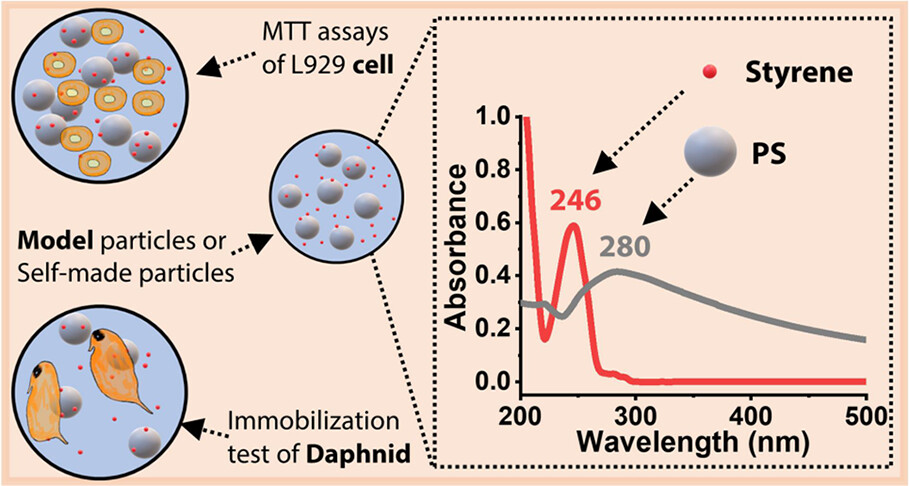News
Role of Residual Monomers in the Manifestation of (Cyto)toxicity by Polystyrene Microplastic Model Particles
26.06.2023
Zhang, Yuanhu ; Paul, Tasmai ; Brehm, Julian ; Völkl, Matthias ; Jérôme, Valérie ; Freitag, Ruth ; Laforsch, Christian ; Greiner, Andreas
Environmental Science & Technology. Bd. 57, 2023, Heft 27 https://doi.org/10.1021/acs.est.3c01134
Polystyrene (PS) is an important model polymer for the investigation of effects of microplastic (MP) and nanoplastic (NP) particles on living systems. Aqueous dispersions of PS MP or NP contain residual monomers of styrene. In consequence, it is not clear if the effects observed in standard (cyto)toxicity studies are evoked by the polymer (MP/NP) particle or by residual monomers. We addressed that question by comparing standard PS model particle dispersions with in-house synthesized PS particle dispersions. We proposed a rapid purification method of PS particle dispersions by dialysis against mixed solvents and developed a simple method of UV–vis spectrometry to detect residual styrene in the dispersions. We found that standard PS model particle dispersions, which contain residual monomers, exerted a low but significant cytotoxicity on mammalian cells, while the in-house synthesized PS, after rigorous purification to reduce the styrene content, did not. However, the PS particles per se but not the residual styrene in both PS particle dispersions resulted in immobilization of Daphnia. Only by using freshly monomer-depleted particles, will it be possible in the future to assess the (cyto)toxicities of PS particles, avoiding an otherwise not controllable bias effect of the monomer.


